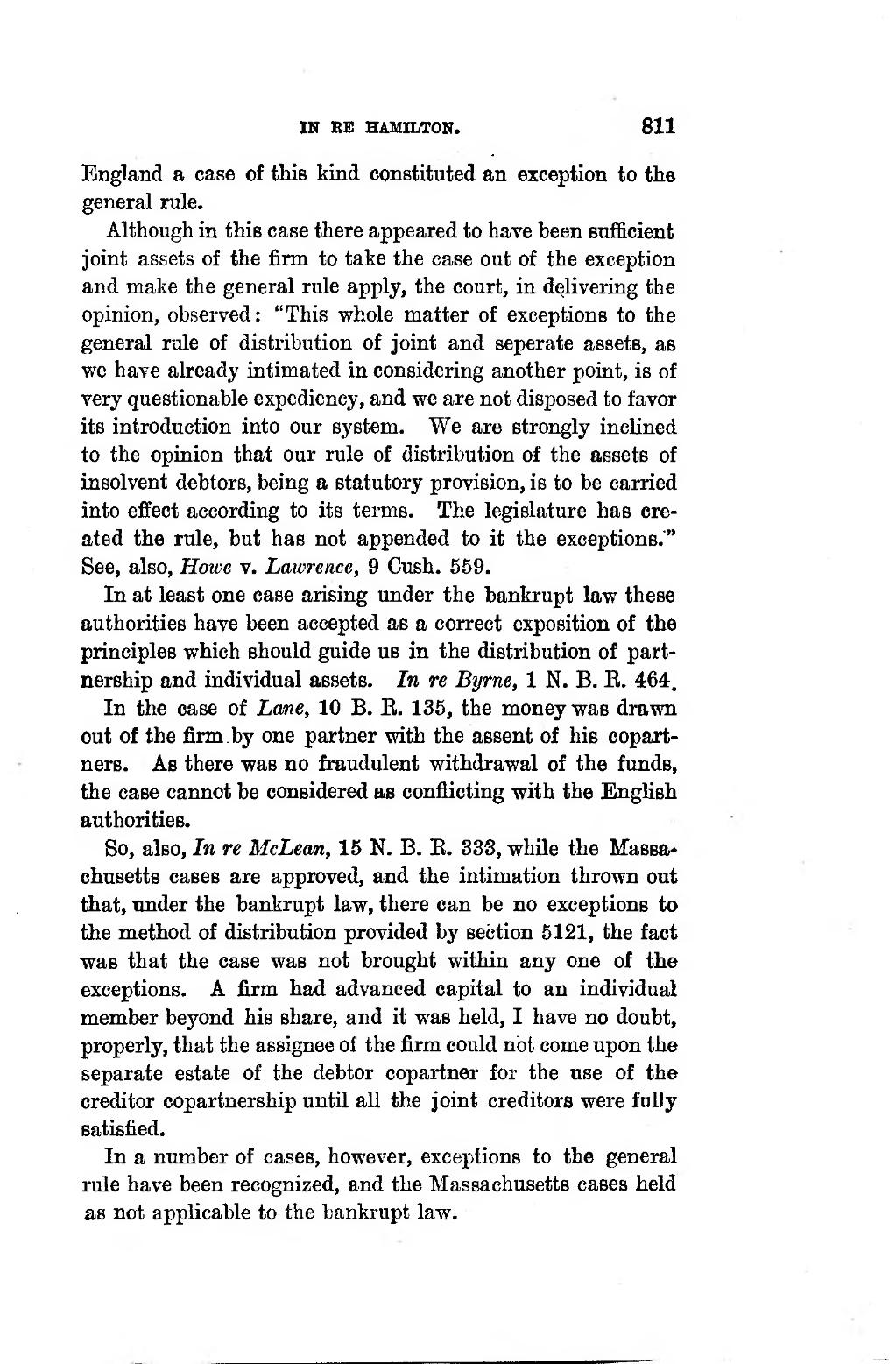IN EB HAMILTON. 811 �England a case of thiB kind constituted an exception to the general rule. �Although in this case there appeared to have been sufficient joint assets of the firm to take the case out of the exception and make the general rule apply, the court, in delivering the opinion, observed: "This whole matter of exceptions to the general rule of distribution of joint and seperate assets, as "we have already intimated in eonsidering another point, is of very questionable expediency, and we are not disposed to favor its introduction into our System. We are strongly inclined to the opinion that our rule of distribution of the assets of insolvent debtors, being a statutory proyision, is to be carried into effect according to its terms. The legislature bas cre- ated the rule, but bas not appended to it the exceptions." See, also, Howe v. Lawrence, 9 Cush. 559. �In at least one case arising under the bankrupt law these authorities bave been accepted as a correct exposition of the principles which should guide us in the distribution of part- nership and individual assets. In re Byrne, 1 N. B. E. 464. �In the case of Lane, 10 B. E. 135, the money was drawn out of the firm by one partner with the assent of bis copart- ners. As there was no fraudulent withdrawal of the funds, the case cannot be considered as conflicting with the English authorities. �So, also, In re McLean, 15 N. B. E. 33S, while the Massa- chusetts cases are approved, and the intimation thrown out that, under the bankrupt law, there can be no exceptions to the method of distribution provided by section 5121, the fact was that the case was not brought within any one of the exceptions. A firm had advanced capital to an individual member beyond bis share, and it was held, I have no doubt, properly, that the assignee of the firm could not corne upon the separate estate of the debtor copartner for the use of the crediter copartnership until ail the joint creditera were fnlly satisfied. �In a number of cases, however, exceptions to the general rule bave been recognized, and the Massachusetts cases held as not applicable to the bankrupt law. ��� �
